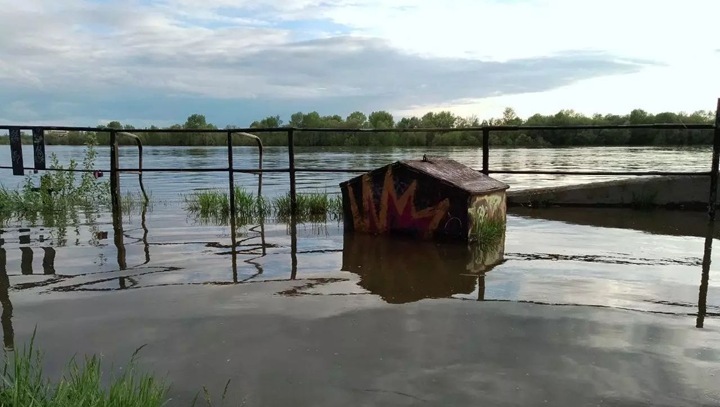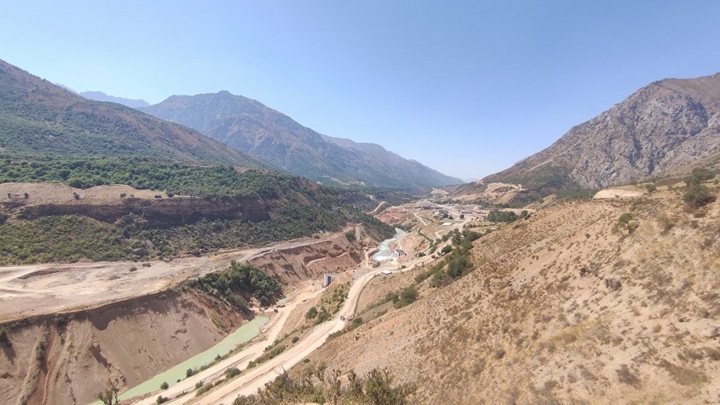The Water of Discord: how the Koshtepa Canal is changing Central Asia
In the 21st century, when climate change and global population growth exacerbate the problem of resource scarcity, water is becoming a new strategic resource, comparable in importance to oil in the last century. If in the XX century states and corporations fought for control over oil fields that determined the course of industrialization and geopolitics, today access to clean drinking water and technologies for its preservation come to the fore. Central Asia is becoming one of the key regions where this struggle is unfolding with particular acuteness.

The Syr Darya and Amu Darya, the two largest rivers in Central Asia, play a vital role for millions of people living in the region. The Syr Darya originates in the Tien Shan Mountains, flowing through Kyrgyzstan, Uzbekistan, Tajikistan and Kazakhstan, and flows into what remains of the Aral Sea. The Amu Darya, an even more full-flowing river, begins in the Pamir Mountains, carrying glacial waters through Tajikistan, Afghanistan, Uzbekistan and Turkmenistan, also flowing into the Aral Sea. However, the fate of these rivers raises serious concerns, as their water resources become the subject of conflicts and irrational use.
From 2018 to 2021, with the support of the US Agency for International Development (USAID), the Koshtepa Canal project was being developed in Afghanistan, aimed at irrigating more than 500 thousand hectares of land. However, after the Taliban came to power in 2021, the situation changed. The new government of Afghanistan has declared its right to dispose of the country’s water resources, including the rivers that feed the Amu Darya. According to experts, the water intake from the Amu Darya for the Koshtepa Canal can reach 19 cubic kilometers per year, which endangers the water supply of downstream countries such as Uzbekistan and Turkmenistan.
Of particular concern is the fact that the construction of the canal is carried out without concreting the banks and riverbed. This reduces costs, but leads to significant water losses due to seepage into loose and sandy soils. In fact, a significant part of the water, instead of irrigating the fields, will go into the sand, aggravating the already catastrophic situation with the Aral Sea.
An example of irrational use of water resources is the Karakum Canal, built in Soviet times. It takes about 500 cubic meters of water per second from the Amu Darya, which is twice the flow rate of the Chirchik River, which provides water to the Tashkent region. It is planned that the Koshtepa canal will take even more – 600 cubic meters per second. At the same time, the Amu Darya is already suffering from a sharp change in the water level, and its further decline is expected in the long term.
The Taliban is building the Koshtepa canal on its own, not having enough experience and qualified specialists to implement such a large-scale project. Over the past 30-40 years, Afghanistan has been gripped by conflicts, which has led to serious social and economic problems. The construction of the canal without fortifications and soil compaction means that the water is actually sent to the desert, which causes serious concerns among experts.
The consequences of launching the Koshtep channel at full capacity can be catastrophic. Among them are a sharp drop in the water level in the Amu Darya, the shutdown of pumping stations, the threat to agriculture, drinking water supply and electricity production, the acceleration of the drying of the Aral Sea and an increase in the number of dust storms, especially in the Republic of Karakalpakstan. Conflicts related to the distribution of water resources are not excluded.
Some experts suggest that the Koshtepa project may be a strategic maneuver, since its construction began before the border with Uzbekistan, which deprives Uzbekistan of the opportunity to influence the situation upstream. The project may affect Surkhandarya, Kashkadarya, Bukhara, Navoi, Khorezm regions and Karakalpakstan in Uzbekistan, as well as Turkmenistan, where there is already a shortage of water due to the Karakum Canal. As an agricultural region, Central Asia is heavily dependent on irrigated agriculture, and water shortages will be a serious blow to the economy and food security.
The Government of Uzbekistan is making active diplomatic efforts to ease tensions related to the construction of the canal. In March 2023, the parties discussed the project and expressed their readiness to implement it on the basis of mutual understanding. It is also noted that Afghanistan depends on electricity imports from neighboring countries, and in December 2023, Uzbekistan and Afghanistan extended the electricity supply agreement for 2024. Uzbekistan can use energy cooperation as a tool for negotiations with the Afghan side.
As possible solutions to the problem for Uzbekistan, it is proposed to agree with Tajikistan on the withdrawal of water from the Amu Darya above the construction point of the Koshtepa canal in order to mitigate the consequences for the Surkhandarya region. It is also proposed to help Afghanistan in the construction of the canal, using high technology to minimize the filtration of water into the ground. Uzbekistan has experienced specialists who have participated in major hydraulic engineering projects since the Soviet Union. Also, the Taliban can be offered to limit the intake of water from the Amu Darya, starting from 100-200 cubic meters per second, but will the Afghan authorities accept such a proposal?
Water in Central Asia is becoming a new strategic resource, and the struggle for it is inevitable. However, there is hope that Uzbekistan and Afghanistan will still be able to agree and find a mutually beneficial solution to the problem of the Koshtepa canal. Despite the complexity of the situation, the countries of Central Asia found a common language even in the most difficult situations, and this time a way out must also be found.
Postasia


